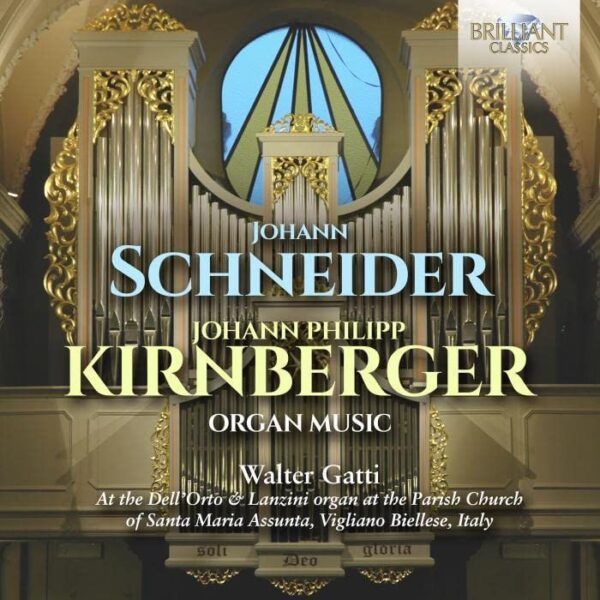Brani
Schneider, Johann: Praeludium und alla breve in G minor
Schneider, Johann: Trio in A minor
Schneider, Johann: Alla breve in F major
Schneider, Johann: Vater unser im Himmelreich [Canto fermo in soprano]
Schneider, Johann: Praeludium und alla breve in D major
Schneider, Johann: Vater unser im Himmelreich [Canto fermo in ped. con organo pleno]
Schneider, Johann: Praeludium und Fuge in G major
Schneider, Johann: Mein Gott, das Herze bring’ ich dir [à 2 clav. e ped.]
Schneider, Johann: Praeludium und alla breve in G major
Kirnberger: Wer nur den lieben Gott läßt walten, Verse 1, IJK 45
La Storia
– This new recording presents two German organ composers, both students of Johann Sebastian Bach, in the middle of the 18th century, the transition from Baroque to the Classical Style.
– Johann Schneider was a German organist, violinist and composer. He was taught music from an early age, first by the Unterlauter cantor Nicolaus Müller, then by the Saalfeld Kapellmeister Reinmann. In his hometown Oberlauter, when around 1720, he became Johann Sebastian Bach’s organ and harpsichord pupil in Köthen. At the same time he studied violin with Johann Gottlieb Graun. From 1726, he was employed as violinist in the court chapel in Weimar (Weimarer Hofkapelle) and finally, in 1729, he was appointed organist of the Nicolaikirche in Leipzig. His style obviously shows relations with that of J.S. Bach, but the influence of the Galante style is also clearly perceptible.
– Johann Philipp Kirnberger (1721-1783) received his first training in harpsichord and violin within the family and continued his studies with the organist Johann Peter Kellner in Gräfenroda. It is actually uncertain whether Kirnberger continued his training in keyboard playing and composition with Bach in 1739-41 or whether his stay there was limited to a few months in 1741. In any case, he was familiar with J.S. Bach’s music and appreciated it very much. In 1739 he continued his studies with Johann Sebastian Bach in Leipzig till 1741, which marked him deeply. He worked in Poland, in the service of local noblemen and, on his return to Germany in 1751, as violinist of the Royal Chapel in Potsdam and finally from 1758 on in Potsdam as composition teacher, Kapelmeister and musical advisor for Princess Anna Amalia, the sister of Friedrich II. More than a composer, he is remembered as a ‘witness’ to Bach’s work: he took charge of copying much of his master’s music – he kept the manuscript of the Brandenburg Concertos and collected several chorales known as the ‘Kirnberger Chorales’. His ‘Clavieruebung’, compiled between 1762 and 1766, contains pieces in order of increasing difficulty and carefully fingered according to the principles of Carl Philipp Emanuel Bach. For organ he wrote preludes to chorales, the eight fugues for organ or harpsichord (featured on this CD) and a ‘Clavierfuge mit dem Contrapunct in der Oktava’.
Schneider & Kirnberger: Organ Music
– Played on the Dell’Orto & Lanzini (2007) organ at the Parish Church of Santa Maria Assunta, Positano, Italy, the specifications of which are contained in the booklet.
– Walter Gatti graduated in several musical disciplines, specializing in Harpsichord, in Organ and Organ Composition, Choral Music and Choir Direction at the Conservatoires “Antonio Vivaldi” in Alessandria and “Giuseppe Verdi” in Torino. Since 1988 he has performed in regular concerts both as a soloist and as an accompanist for choirs, soloists and orchestras, playing at important festivals and on prestigious stages.



